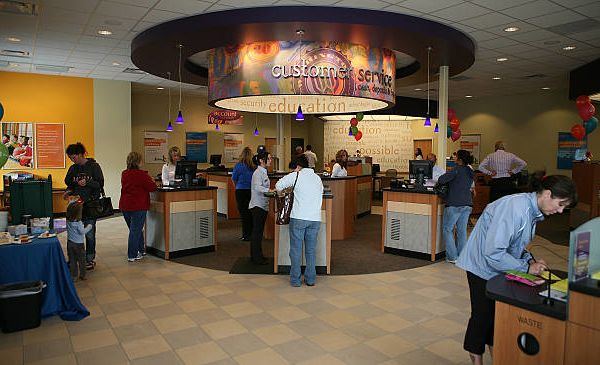If you were born before 1990’s, chances are you will remember Washington Mutual bank (a.k.a. “WaMu”), especially if you were living in the western part of the United States. But the question isn’t so much if– but rather how you remember this bank.
A Dual Legacy
Unfortunately, most people will remember WaMu for its demise, its ending as the largest bank failure in American financial history. What started with risky sub-prime mortgage investments eventually triggered a credit down grade for the bank in September 2008, followed by a subsequent run on the bank and an overnight fire sale 10 days later to the highest bidder, JPMorgan Chase. It made global headlines. I’ll spare you the details because it has been covered many times before. But do think about it for a moment… A savings bank that grew and succeeded for more than 100 years, only to be defined and remembered by what happened in its final 10 days.
For me, this is not the legacy nor the lesson that I think is most memorable. (Besides, history has shown that we haven’t really learned much from it any way, but that’s a different story). What I think is most interesting is the brand angle of it all. As a branding professional I remember WaMu for the true pioneer that it was, the one that successfully disrupted an entire industry with a different, more human approach to banking.
Banking With A Smile
The premise of the WaMu brand was simple yet groundbreaking. They flipped the script of a traditional business model, aiming to change a rather stodgy, opulent and intimidating perception that is inherent to the industry.
WaMu was here to disrupt, wanting to be the bank for everyone – welcoming, friendly and a bit quirky. And their actions matched their words. Aside from being the first to offer free checking accounts without ATM fees, WaMu also lowered the barrier for people to engage at the branch level. Instead of the stuffy interiors and bullet proof glass counters with tellers in suits, the new WaMu branches featured modern, open floor plans with casually dressed associates that were welcoming and approachable.
This was known as the ‘Occasio’ retail concept, and the formula worked. In fact, the brand performed up until the very last month, consistently ranking highest in brand consideration for years – outperforming Bank of America, Wells Fargo, Citi Bank and pretty much any other competitor within its geographic footprint. How do I know? Well, I was there, leading the brand strategy team during the last 18 months, carefully monitoring our brand metrics along the way. And while my tenure was brief, it left me with a deeper [hindsight] perspective and appreciation for the strength of this brand.

Fertile Grounds For Disruption
Why was WaMu successful at disrupting a century-old industry? It’s not like they started from scratch, with a bright brand idea and a focused agile team that has little to lose. That’s the base premise and playbook of a startup. Instead, Washington Mutual was already a well-established brand in one of the oldest industries with a loyal following. Yet, they differentiated and disrupted in a meaningful way.
While I don’t claim to be an expert in organizational turn-around strategies, WaMu’s brand evolution did make me think about the conditions that need to exist for successful brand disruption. Looking back, I believe there are 7 critical elements.
1. A [Hidden] Gap In The Market. Arthur Schopenhauer once said: “The problem is not so much to see what nobody has yet seen, as to think what nobody has yet thought concerning that which everybody sees”. All banks have access to similar research, but they don’t all draw the same conclusion (let alone act on them). WaMu was the first to recognize and understand the prevailing consumer pain points. More importantly, they were bold enough to address them, appealing to a greater audience that was looking (craving) for a more human side of banking.
2. Courageous Leadership. This one probably goes without saying… Major change only happens if leadership believes in the idea. And with that I mean support from the CEO and President. The top leaders need to be on board – convinced, passionate and relentless in driving a compelling vision throughout every part of the organization. It all starts from the top.
3. Customer Experience. You can’t successfully disrupt through messaging and branding alone. It needs to be backed up with the product and experience. Apple’s messaging around simplicity wouldn’t have lasted this long if the store experience and product design were not aligned. The same is true for WaMu. Without the innovative branch design and free checking accounts it would have been an empty promise.
4. Culture Of Brand. The WaMu brand was built from the inside out. Everyone knew what the brand’s promise was and their role in keeping it. Employee training and touchpoints reinforced critical behaviors, reward and recognition systems were in place and everyone in the organization was empowered to ‘over-deliver’ on the promise.
5. Creative Excellence. Thanks to the creative minds at Wolff Olins and Chiat\Day\LA, WaMu’s advertising was aligned through unconventional creative that grabbed attention and reinforced the unique spirit of the bank. Positioned as banking with a smile, WaMu’s voice was informal and unconventional, using plain English (no jargon) and a sense of humor, effectively lowering the threshold to engage.
6. Brand Led Innovation. What surprised me the most as a newcomer to WaMu was how the entire organization looked to the brand for inspiration and guidance. Both product and experience were designed with the brand in mind. It was truly a brand-led organization. Wamulians (yes, that was an actual word) understood the brand and believed in it, which made for a more authentic consumer experience.
7. Complacent Competition. It’s important to note another factor in WaMu’s success…its competition. Without them WaMu would not have been as successful from a brand perspective. They were predictable, operating like every other bank and investing heavily in awareness campaigns rather than customer experience or brand culture. This created an important contrast to WaMu, a point of reference that solidified their position as just another bank while amplifying WaMu as the human-centered choice.
Here’s to the bold creative minds, willing to take a chance, kill a sacred cash cow and defy conventional wisdom. WaMu left a void in the market. To this day I am still waiting to see which bank brand will take its place.
Contributed to Branding Strategy Insider by: Maarten Lobker, Global Brand Marketing Professional
Were you on the front lines of disruptive brand strategy? We want to hear from you. Please share your case study with Branding Strategy Insider.
The Blake Project Can Help: Please email us for more about our purpose, mission, vision and values and brand culture workshops.
Branding Strategy Insider is a service of The Blake Project: A strategic brand consultancy specializing in Brand Research, Brand Strategy, Brand Growth and Brand Education




